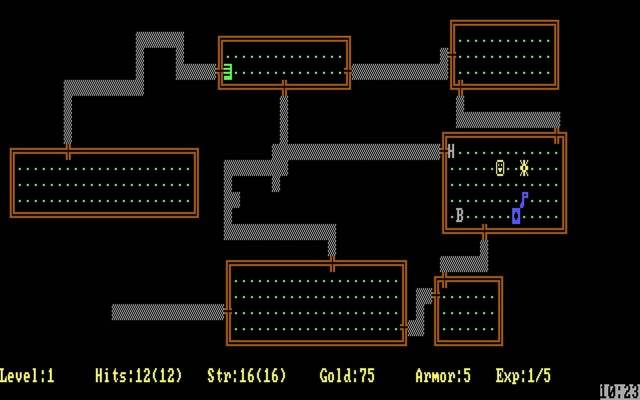The term “roguelike” has been pretty commonly used over the last decade or two. It’s grown out of a single game to encompass an entire genre of games about progression, runs, and death.
But as something grows and innovates, it starts to stretch further from its original definition. And so we have the frequent friction between roguelike and “roguelite.” Games taking directly after, and games inspired by, a concept.
The difference isn’t always so easy to discern. So here’s a breakdown of how roguelikes and roguelites have been differentiated and why.
Table of contents
Roguelike vs. Roguelite
The most common interpretation is that roguelites tend to eschew hardline roguelike gameplay elements. Roguelites can lack permadeath. They can also have meta-progression, where the player grows in strength run-over-run.
Roguelites might also have fixed events or an established sequence that narrows the possibility space in lieu of pure randomness. Often, the difference in roguelite versus roguelike lies in whether a game adheres to or breaks from hardlines about what a rogue game is. Most often, though, roguelite games incorporate some level of permanent, out-of-run progression, making that the easiest signifier.
Roguelikes, on the other hand, have a specific definition based on the Berlin Interpretation scale that was originally developed around the original roguelike, Rogue. While a roguelite may have some elements of a roguelike, a “true” or traditional roguelike follows multiple specific criteria that differentiate it from most genres.
As the genre grows, we’re starting to see roguelites that openly describe themselves as a more casual experience and roguelikes that, although they score fairly high on the Berlin Interpretation scale, barely stay within the massive roguelite umbrella.
The history of Roguelikes
Inspired by the 1980 game Rogue, the idea of a roguelike is that you have one life to live. You start with a character, usually, and build them up over time. But when that character falls in battle, they are gone forever. If you want to see more, or do more, it’ll be on another character.

This is the core concept behind “runs” and what makes a roguelike different from, say, Diablo. Games like NetHack and Dungeon Crawl Stone Soup fit neatly into this category.
In 2008, at the International Roguelike Development Conference, players and developers in attendance developed the “Berlin Interpretation” of a roguelike. It outlined high-value and low-value factors, to essentially “score” a game’s roguelike-ness.
The eight high-value factors were:
- Random generation
- Permadeath
- Turn-based
- Non-modal
- Emergent gameplay
- Resource management
- Hack-and-slash gameplay
- Map exploration
And the lower-value factors include:
- Controlling a single character
- Monster behavior similar to player
- Tactical challenge
- ASCII characters and a tile map
- Exploring dungeons made of interconnecting rooms and corridors
- Status presented through numbers

Breaking the mold
Of course, rogue-style games have evolved quite a bit over the years since 2008. The advent of “seeds” which generate certain runs certainly changed things up, as players could now essentially play each other’s runs. Developers could use this to craft specific challenges, encouraging players to solve them.
Meta-progression is a major difference, allowing players to open up new weaponry or upgrade aspects of their character. These upgrades, unlike those gained inside a run, are persistent.
Examples of modern roguelites include some big games. Hades, Rogue Legacy, and Dead Cells all incorporate meta-progression.
Games like Spelunky, meanwhile, took a fresh look at the genre from a platformer perspective. And Slay the Spire and other card games expanded the world of digital roguelikes into the deckbuilding genre. Even rhythm games have Crypt of the Necrodancer.
The larger rogue genre might be pretty expansive at this point, but there’s certainly no shortage of new concepts. Ultimately, what’s in a name is only the tip of the iceberg, as developers keep finding new ways to reinvent this genre.
Diving deeper into Roguelike vs. Roguelite mechanics
You may have already noticed that the lines between the two genres blur as we get into the nitty-gritty of roguelike vs. roguelite discussions. It’s easy to say that games like Slay the Spire, Enter the Gungeon, or The Binding of Isaac are roguelikes until we dive deeper into what truly makes a game a roguelike. Any game with some level of meta-progression will fall into the ever-growing roguelite umbrella.
With all of that said, it’s not too surprising to hear that the most popular “roguelikes” are actually roguelikes. There are just as many that very clearly say they’re a roguelite, but what about the rest? Rather than looking at this, we have to dig deeper into traditional roguelikes.

Let’s take a look at a traditional roguelike mentioned earlier: NetHack. Initially released in 1987, it primarily features turned-based hack-and-slash gameplay with permadeath mechanics. You can choose your race, alignment, and role, but beyond that, your playthrough depends on your skill with navigating its procedurally generated dungeons. When you think of a true traditional roguelike, NetHack is one of the most popular entries that comes to mind.
At the end of the day, the beauty of the roguelike and roguelite genre comes from how its evolution over time allows it to mix with other genres. With games like Crypt of the Necrodancer implementing rhythm elements into its gameplay and Balatro being poker as a roguelike, the continuous shifts in the genre are turning a once Dungeons & Dragons-inspired niche into a colossus within the gaming world.
Car Crushers 2 (CC2) Codes (October 2024)
Survival Odyssey Codes (October 2024)
Clover Retribution Codes



